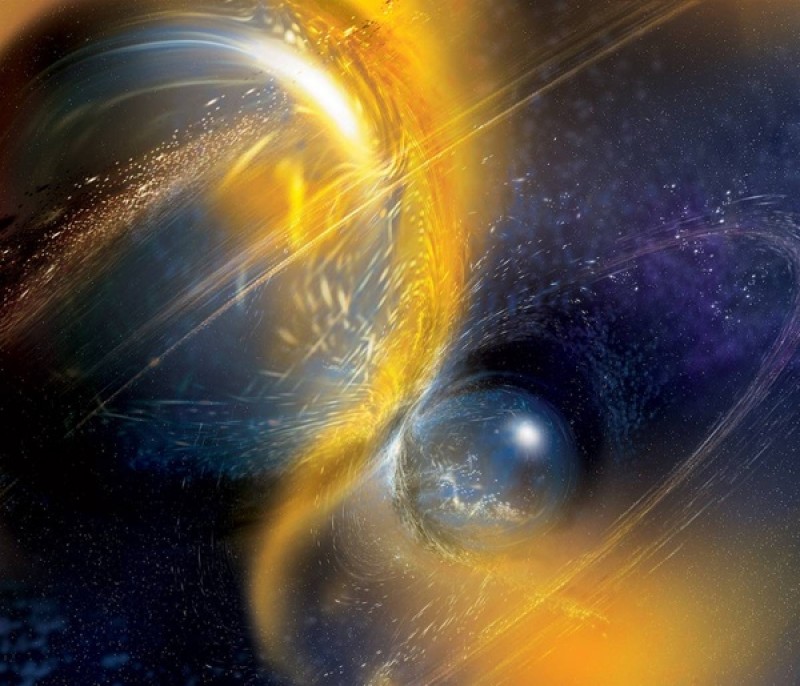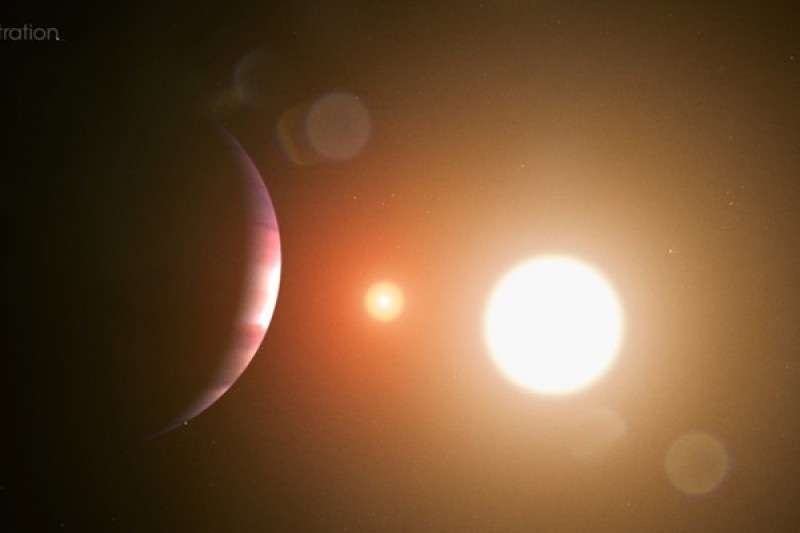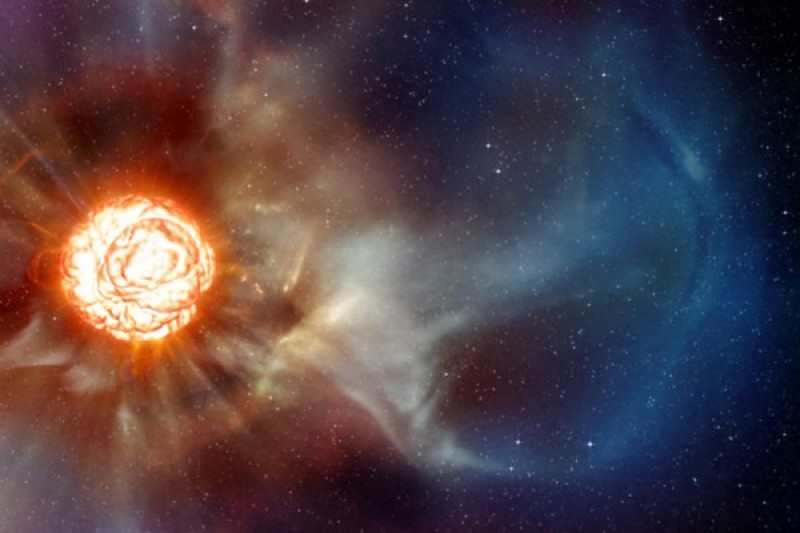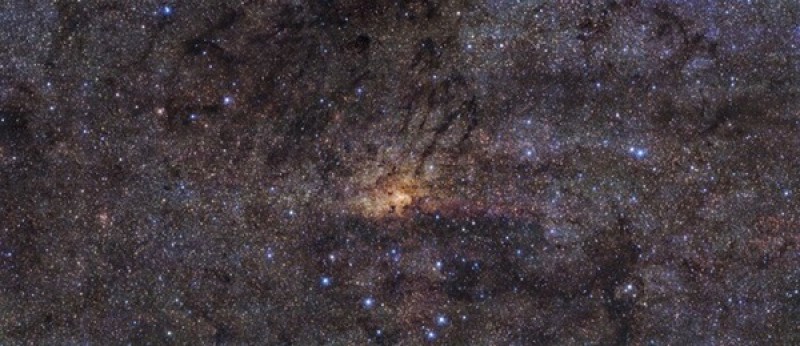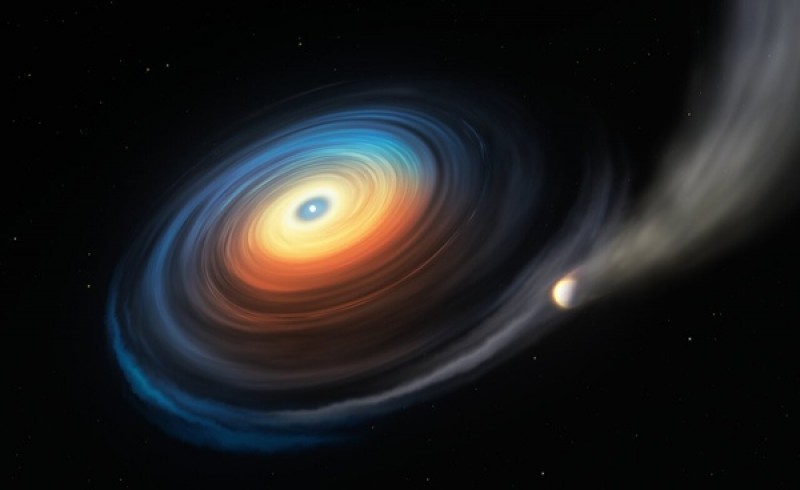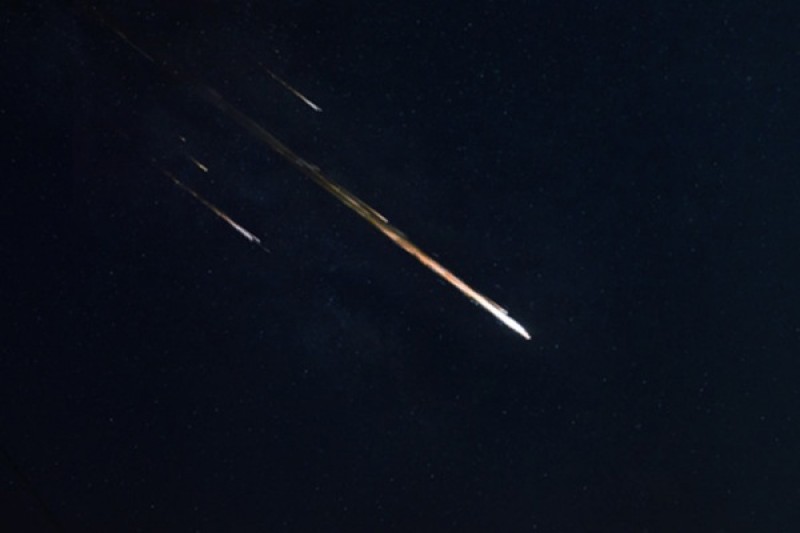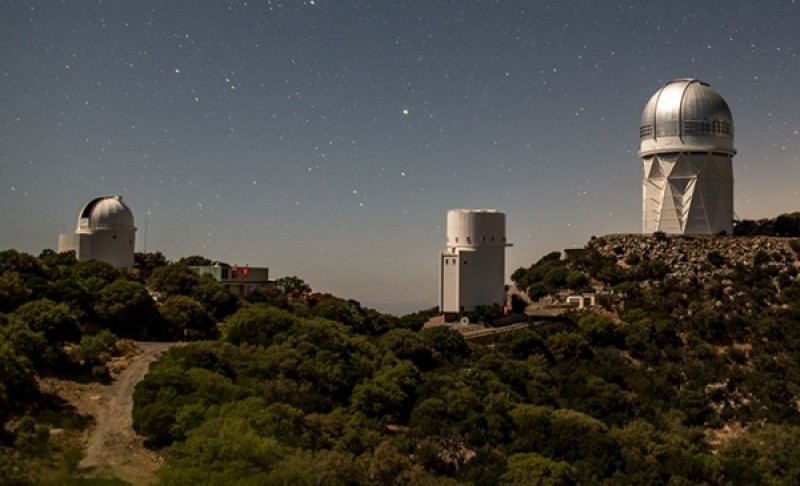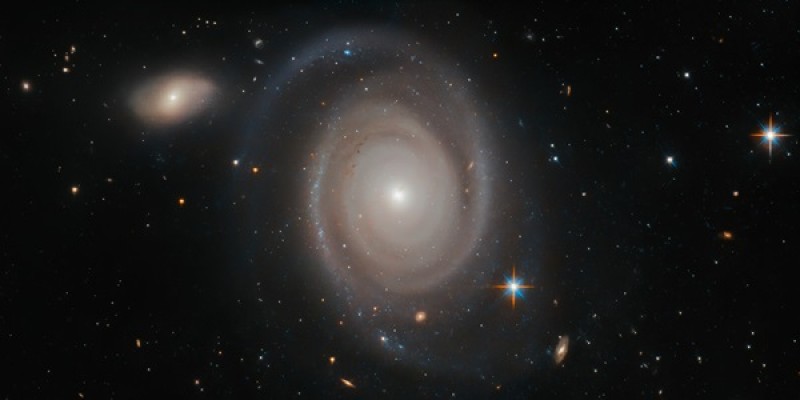News
Scientists find meteorite pieces older than the solar system
Monday, January 13th 2020 11:09 PM
In pieces of a meteorite, scientists have found tiny mineral grains that are older than the Sun and the solar system, which formed about 4.6 billion years ago. Some of these “presolar grains,” the researchers found, are between five and seven billion years old, making them the oldest known materials on Earth.
The grains initially formed in interstellar space out of material ejected from mature stars that condensed into dust. The researchers who identified the grains think many of them likely were created following a boom in star formation the Milky Way experienced some seven billion years ago. If confirmed, the new finding demonstrates that researchers can study meteorites to better understand the history of star formation in our galaxy.
Rocky records
When small to medium stars (from about 0.5 to 5 times the mass of the Sun) approach the ends of their lives, they expand into red giant stars and blow off their outer layers. Th...
Read More
Read More
Gravitational waves reveal a second neutron star collision
Thursday, January 9th 2020 06:23 PM
For just the second time, scientists have used gravitational waves (ripples in space-time) to detect the merger of two colliding neutron stars. The neutron stars — which each cram roughly the mass of the Sun into a city-sized space — have a combined mass greater than any other pair of neutron stars ever observed.
“From conventional observations with light, we already knew of 17 binary neutron star systems in our own galaxy and we have estimated the masses of these stars,” said Ben Farr, a LIGO team member from the University of Oregon, in a press release. “What’s surprising is that the combined mass of this binary is much higher than what was expected.”
After the collision of these two particularly hefty neutron stars, researchers say the final merged product was likely massive enough (at 3.4 solar masses) to collapse into a black hole, gobbling up any stray matter and light located nearby.
Second pair of colliding neutron sta...
Read More
Read More
NASA telescope discovers its first planet orbiting two stars
Tuesday, January 7th 2020 11:55 PM
Since its launch in 2018, NASA's space-based TESS Telescope has discovered at least 37 confirmed exoplanets and identified more than 1,500 exoplanet candidates. And now, it has uncovered its first Tatooine-like circumbinary planet — a world that orbits two stars instead of one. Astronomers have found only a handful of such circumbinary planets so far. But the new discovery shows that many more of these exotic systems may be located around bright, nearby stars like those TESS is built to study. By finding and investigating more of these systems, astronomers hope to get a better understanding of how binary star systems form and evolve.Researchers announced the discovery on Monday at the 235th meeting of the of the American Astronomical Society in Honolulu.
A tilting orbit
The primary objective of TESS (the Transiting Exoplanet Survey Satellite) is to scan nearly the entire sky to hunt for exoplanets loca...
Read More
Read More
Betelguese's bizarre dimming has astronomers scratching their heads
Tuesday, December 31st 2019 06:30 PM
Over the last few weeks, Betelgeuse, the bright reddish star in the constellation Orion, has dimmed to the faintest it's been in a century. Astronomers have been buzzing with excitement about the event, discussing the star over social media and speculating what might be going on.
The big question on everyone’s mind is whether the star is about to go supernova and explode. That’s probably not what’s about to happen, astronomers say, but they’re still excited to be witnessing behavior they’ve never seen from Betelgeuse before. There’s a lot astronomers still don’t know about the variable behavior of supergiant stars like Betelgeuse, so any strange activity is a chance to learn more about the lives of stars.
A Fading Supergiant
For over a century, astronomers have watched Betelgeuse brighten and dim again and again. Betelgeuse is a red supergiant, a star late in its life that has expanded to an enormous size. Bubbles o...
Read More
Read More
When the Milky Way erupted in 100,000 supernovae
Thursday, December 26th 2019 10:43 PM
The European Southern Observatory’s Very Large Telescope in Chile has captured a new glimpse at the history of the center of our Milky Way. Astronomers say they’ve found evidence that there was once a burst of star formation so intense that it created over 100,000 supernova explosions.
According to the new data, the Milky Way was once what astronomers call “a starburst galaxy.” It’s an area commonly seen in other parts of the universe where stars form at a fast rate. About 80 percent of the stars in the center of the Milky Way were formed between 8 billion and 13.5 billion years ago. But about 1 billion years ago, another intense star-formation burst happened, creating many massive new stars. These large stars live shorter lives than small stars. And when large stars die, they explode. So the starburst led to a surge in supernovae and a dramatic period of star formation all at around the same time.
...
Read More
Read More
Giant planet found around tiny white dwarf star, a first
Wednesday, December 4th 2019 11:58 PM
For the first time, astronomers have discovered evidence for a giant planet orbiting a tiny, dead white dwarf star. And, surprisingly, the Neptune-sized planet is more than four times the diameter of the Earth-sized star it orbits.
"This star has a planet that we can't see directly," study author Boris Gänsicke from the University of Warwick said in a press release. "But because the star is so hot, it is evaporating the planet, and we detect the atmosphere it is losing." In fact, the searing star is sending a stream of vaporized material away from the planet at a rate of some 260 million tons per day.
The new discovery serves as the first evidence of a gargantuan planet surviving a star's transition to a white dwarf. It suggests that evaporating planets around dead stars may be somewhat common throughout the universe. And because our Sun, like most stars, will also eventually evolve into a white dwarf, the find could even shed lig...
Read More
Read More
Earth may have recently destroyed one of its own minimoons
Wednesday, November 27th 2019 06:23 PM
The Moon is probably not Earth’s only natural satellite right now. Our planet's gravity regularly captures small space rocks and pulls them into orbit. Astronomers estimate that there's probably a 1-yard-wide “minimoon” orbiting Earth at any given time.
And now, a team of researchers in Australia think they actually spotted one burning up in Earth’s atmosphere in 2016 as a particularly bright meteor, or fireball. It's only the second fireball that scientists suspect came from a minimoon. The team presented their findings in a recent paper published in The Astronomical Journal.
The minimoons next door
Astronomers haven't had much more luck finding minimoons in orbit, either. So far, scientists have just spotted one while it was still circling Earth. Starting in 2006, a tiny asteroid called 2006 RH120 stuck around for about 11 months before leaving the Earth-moon system.
However, researchers expect they'll find more of these...
Read More
Read More
SpaceX releases 60 more Starlink satellites to orbit
Wednesday, November 13th 2019 09:35 PM
On November 11, SpaceX launched a Falcon 9 rocket carrying another 60 Starlink satellites, which will eventually provide internet service worldwide. The launch from Cape Canaveral Air Force Station made history by reusing a record number of rocket parts. But even with that feat in aerospace design, the launch wasn’t celebrated by everyone.
According to SpaceX’s plans, Starlink will be a constellation totaling about 12,000 satellites orbiting Earth. The goal is to provide internet to the United States and Canada after just six Starlink launches. After 24 launches, the internet coverage will spread across the globe. But with so many satellites orbiting Earth, astronomers and dark sky observers are nervous about how these satellites will affect their observations.
Obstructing a View
When the first 60 satellites launched in May, many people noticed the satellites were so bright that they could be observed with the naked eye. And fo...
Read More
Read More
DESI will map millions of galaxies and reveal dark energy's history
Thursday, November 7th 2019 08:55 PM
A powerful new astronomical instrument got its first view of the sky from an Arizona mountaintop two weeks ago. Once the device officially gets to work in early 2020, it will capture the light from thousands of galaxies each night — up to 5,000 galaxies every 20 minutes, in ideal conditions. With this instrument, researchers will make a deep-space map of where galaxies lie to study dark energy throughout the history of the universe.
Scientists installed the device, called the Dark Energy Spectroscopic Instrument (DESI), on a telescope at Kitt Peak National Observatory over a period of 18 months. And on October 22, DESI turned its gaze to the night sky to make its first test observations. Over the next few months, the DESI team will finish testing and begin its survey in earnest.
How to map the universe
In just five years, the instrument is expected to gather light from 35 million galaxies and 2.4 million quasars, or galaxi...
Read More
Read More
Hubble reveals a galaxy in a cosmic city
Tuesday, November 5th 2019 10:48 PM
The universe is vast, with galaxies containing gas, dust, stars, and planets sprinkled throughout. But this sprinkling isn’t random; although some galaxies are indeed truly alone, most are not, but instead are congregating through gravity. NGC 1706, captured in this stunning Hubble Space Telescope image, is one of about 50 galaxies bound together in a group that lies in the direction of the southern constellation Dorado the Swordfish. The brilliant face-on spiral and its neighbors sit about 230 million light-years away.
The universe itself is expanding, but galaxies can still exert gravity on each other. If you were to take a step back and view the universe from outside, you’d see that galaxies form clumps and strings, while leaving voids of vast nothingness in between. About half of all galaxies can be found in some sort of grouping — in fact, galaxies and galaxy groups are the visible signposts marking what astronomers call the c...
Read More
Read More

